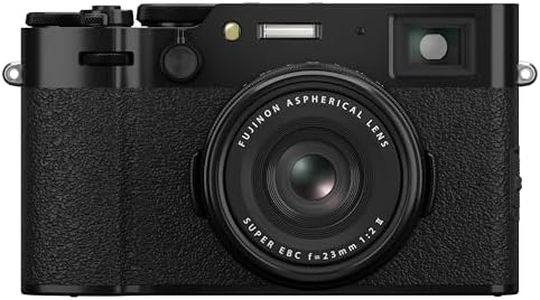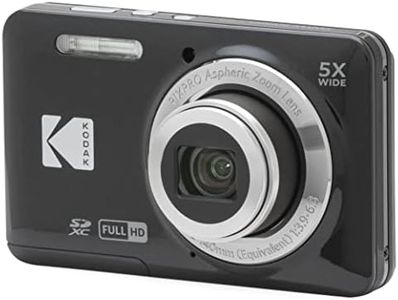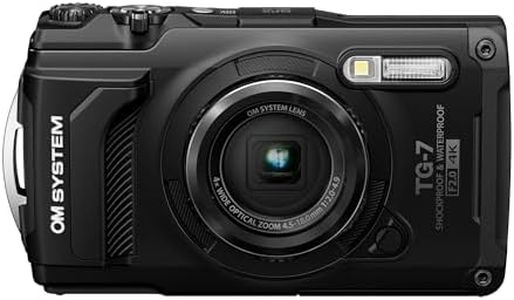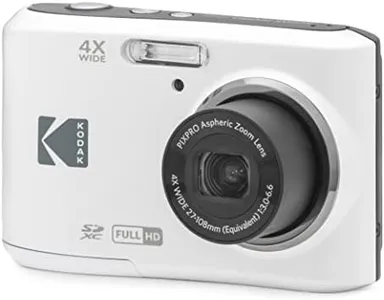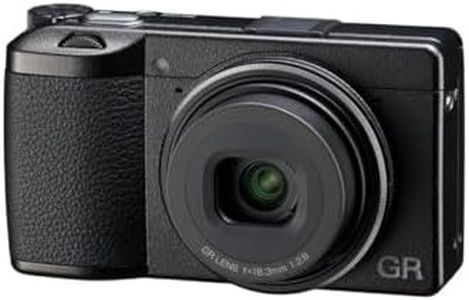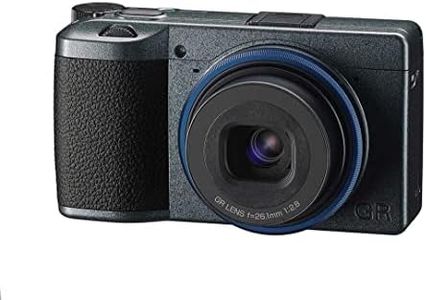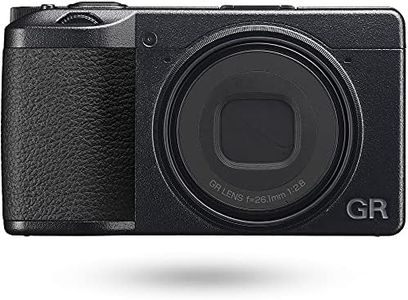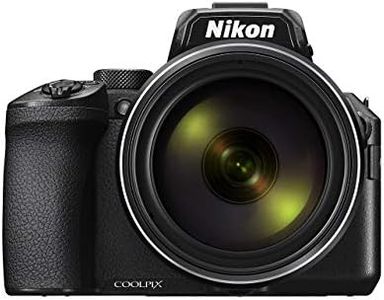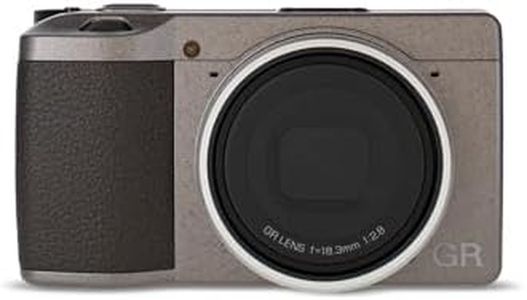We Use CookiesWe use cookies to enhance the security, performance,
functionality and for analytical and promotional activities. By continuing to browse this site you
are agreeing to our privacy policy
10 Best Digital Compact Cameras
From leading brands and best sellers available on the web.Buying Guide for the Best Digital Compact Cameras
Choosing a digital compact camera can be a rewarding experience, especially since these cameras are perfect for everyday photography and travel. Digital compacts are known for their easy-to-use design, portability, and automatic settings that help anyone take good photos without much effort. When shopping for one, it's important to look at factors that directly impact image quality, ease of use, and how the camera fits into your lifestyle. By understanding the main specifications, you can focus on what really matters for your particular needs.Sensor SizeThe sensor size is a major factor in determining how much light a camera can use to create an image. Larger sensors generally produce better photos, especially in low light, as they capture more detail and manage noise well. Compact cameras usually have small sensors, but some models come with slightly bigger ones for improved image quality. For casual use or sharing online, a standard small sensor works well; if you care about print quality or low-light shots, leaning towards a camera with a larger sensor is advisable.
MegapixelsMegapixels refer to the resolution of the images a camera can take, or in other words, how much detail the photos will hold. While higher megapixel numbers might seem better, most digital compact cameras already have enough resolution for everyday needs and even moderate enlargements. For typical prints and social media, anything between 12 to 20 megapixels will be more than enough. Pick based on what you plan to do with your photos; only go for high megapixels if you intend to crop tightly or make large prints.
Optical ZoomOptical zoom lets you get closer to your subject without losing quality, as opposed to digital zoom which just enlarges pixels. Compacts can come with a range from 3x up to 30x or more. If you often take photos of distant objects, like wildlife or sporting events, look for a higher optical zoom. If you mostly photograph people or landscapes up close, a moderate zoom will suffice and keep the camera size more manageable.
Image StabilizationImage stabilization helps reduce blur caused by hand movements, which is particularly helpful in low light or when using zoom. There are two main types: optical and digital, with optical generally being more effective. If you plan on taking photos in environments where you can't always keep perfectly still, or if you often zoom in, prioritize a camera with good optical image stabilization.
Lens Aperture (f-number)The lens aperture, shown as an f-number like f/2.8 or f/4, tells you how wide the lens can open to let in light. A lower f-number means a wider opening and more light, which is helpful for low-light photography and creating blurry backgrounds. If you love shooting indoors or in the evenings, a camera with a wider maximum aperture (lower f-number) will help. For daylight or general use, this specification isn’t as critical.
Autofocus PerformanceAutofocus determines how quickly and accurately the camera can lock onto a subject, which is crucial for capturing sharp images, especially of moving subjects. Some compact cameras focus faster than others or have features that help with tracking moving objects. If you take photos of kids, pets, or action, pay extra attention to autofocus speed and reliability; for still subjects, most compacts will be sufficient.
Size and WeightOne of the biggest advantages of a compact camera is its portability. Cameras range from pocket-sized models to larger ones with more manual controls. Think about how often and where you’ll carry it; if you want something always with you, opt for a slimmer, lighter option. If you don’t mind a little extra size for added features, consider models with more grip or manual dials.
Screen Type and Touch FunctionMost Digital compacts have an LCD screen for composing shots and viewing photos. Screen sizes and resolutions can vary, and some models have touchscreens for easier navigation and focusing. If you like intuitive controls and quick access to menus, a camera with a good-quality, possibly touch-enabled, screen will enhance your experience. Those who just need a basic screen for framing shots may not need advanced display features.
Video CapabilitiesBesides taking still photos, many digital compact cameras record video, with qualities ranging from standard HD to 4K. If you plan to capture a lot of video or want sharper footage, consider a camera with higher resolution video and features like autofocus during recording. For occasional clips or social media sharing, basic HD video will suffice.
Connectivity (Wi-Fi, Bluetooth)Modern compacts often come with wireless features, letting you transfer photos to your phone or share them online directly. Wi-Fi and Bluetooth also help with remote shooting from a smartphone. If you value seamless sharing or backup, focus on cameras with stable connectivity options. If you prefer to move photos via a cable or memory card, this isn’t as important.
